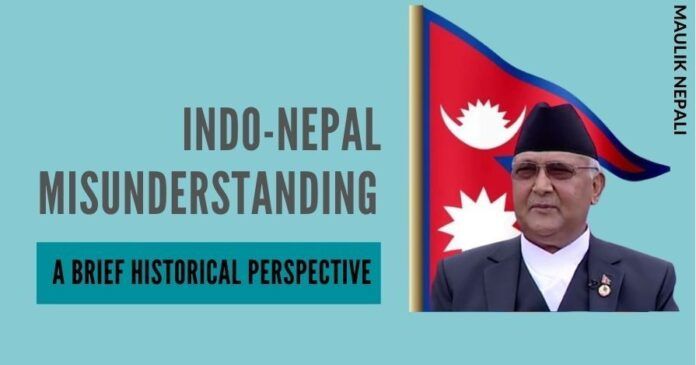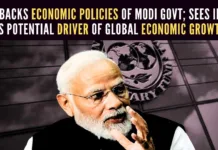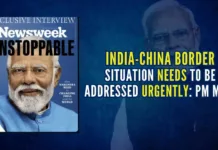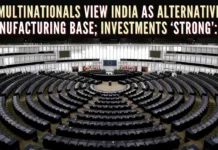
Introduction
On June 18, 2020, Nepal updated its political map through a constitutional amendment, which incorporated three places, along the Indo-Nepal border, into the political map of Nepal. The areas included on this new map have also been a part of the political map of India for the past couple of decades. Then on July 14th, the PM of Nepal, K P Sharma Oli claimed that Shri Ram was born in Nepal and that India created a fake Ayodhya for cultural encroachment. PM Oli had also vaguely claimed, a couple of weeks ago, that Indians are out to bring down his government. These are only a few examples of the recent series of outright acrimonious and undiplomatic moves from Kathmandu.
Nepal and India share the oldest and deepest of cultural ties, out of any two other nations on the face of this planet. Before 1947, it was hard to tell where Nepal ended, and India started (or vice versa). Visa is not required to cross the borders either. Both the nations are inheritors of the same shared Sanatan civilization. Indian movies and songs are more popular in entire Nepal than Nepalese movies and songs are (or ever were). Nepalese have contributed to the Indian independence struggle and Nepal has also provided a safe haven for many Indian politicians during the emergency imposed by Indira Gandhi. Nepal has had a special place in Indian hearts due to its long-held status as a Hindu Kingdom (Nepal is no longer the Hindu Kingdom).
Nepalese Congress Party (NC) was in armed struggle against feudal panchayat rule and was demanding for multi-party democracy in Nepal.
How did it get to a point that India does not have a single strong political ally in Nepal, despite sharing so much in common? During the last few years, China and the West have had a much larger say in Nepalese politics than India has had. Why is Nepal so bitter and ill-behaved towards India? Due to this hostile positioning of Nepal, the Indian goodwill towards Nepal and towards the Nepalese people is decaying slowly and steadily.
Some geopolitical and strategic incidents of the past are extremely important in understanding Nepali bitterness, regardless of whether you think it is justified. Assessment of the problem is essential before even thinking of a solution, especially if the issue at hand has geopolitical ramifications. Such a task is too big for a single person to tackle. Yet, one cannot resist the basic human nature to express what one sees as the truth. I have fallen prey to this inherent human urge – and have mustered the courage to write a historical overview of Indo-Nepal bilateral relationships.
Bitterness as Old as the Modern Indian State
In December 1950, the Kingdom of Sikkim became India’s protectorate – allowing India to control Sikkim’s external affairs and defence. Nepalese Monarchy received a similar offer to become Indian protectorate, by submitting its foreign relations and defence to India. Obviously, the Nepalese monarchy refused to give up its sovereign right.
Around the same time, a democratic movement was playing itself out in Nepal. Nepalese Congress Party (NC) was in armed struggle against feudal panchayat rule and was demanding for multi-party democracy in Nepal. When the Nepalese monarchy refused the offer to become an Indian protectorate, India presented the same offer to the Nepalese leaders of the democratic movement. India offered to actively help the democratic movement if the democratic leaders agreed to make Nepal India’s protectorate.
Rajiv Gandhi had just become the PM of India in a landslide electoral victory, after the assassination of Indira Gandhi. His hatred of the Nepalese monarch and Nepal, in general, is well known.
Indian side tried its best to convince BP Koirala (leader of the movement, who subsequently became the first elected Prime Minister of Nepal) that the Nepalese monarchy is a common enemy of both India and the people of Nepal. Nepalese democratic movement did not accept the offer. The Nepalese monarchy did not want to push the Nepalese democratic movement into Indian hands. Thus, monarchy and democratic forces in Nepal reached an agreement to implement multi-party democracy in Nepal. Nepalese monarchy hurried through to make sure Nepal became a member of the UN. This made sure that further encroachment on Nepalese sovereignty became exponentially difficult.
This was the first modern instance where anti-India sentiments gained a stronghold in the Nepalese political sphere. Both the king and the political leaders in Nepal now knew that India had eyes on the Himalayan nation. Therefore, they started sowing seeds of hatred towards the Indian government, in the minds of Nepalese people. Over the course of time, even a small movement from India incited unexpected backlash from the Nepalese population – much like what we are seeing in Nepal right now.
Rajiv Gandhi’s Attempt at Blackmail
The year was 1989; after a decade long stint at electoral democracy, Nepal had reverted back to the panchayat rule under the direct supervision of the monarchy. Nepal’s political parties, some peacefully and some violently, were involved in a movement to re-establish democracy in Nepal. Some of the democracy activists were well-established leaders from Nepali Congress Party, whereas some others were rising communist leaders.
Rajiv Gandhi had just become the PM of India in a landslide electoral victory, after the assassination of Indira Gandhi. His hatred of the Nepalese monarch and Nepal, in general, is well known. Mr Gandhi saw the growing democracy movement in Nepal as an opportunity to coax the Nepalese monarchy into giving up some of its sovereignty. First, he provided ample support for the Nepalese democratic movement and used them to undermine the Nepalese monarchy. Mr Gandhi was now convinced that the Nepalese monarchy will concede part of their sovereignty to India, due to the pressures created by the democratic movement.
After several rounds of diplomatic talks with the King failed, Mr Gandhi decided to impose a stringent economic blockade on the Himalayan state for over a year. Nepalese suffered for fuel, electricity, food, and other basic supplies. In modern times, such a blockade would constitute a crime under international laws. This created further pressure on the Nepalese monarch.
Nepalese king realized that he had to share his power – either with the Indians or with his compatriots through multiparty democracy. The famous words of King Birendra, that he shared with his confidante, before announcing democracy, “I would rather be under my own people than under some foreign aggressor.”
Through this incident, the Nepalese monarch came to perceive the Indian establishment as an aggressor. Due to the economic embargo, the goodwill towards India, in Nepalese people’s heart, had deformed into a burning hatred. Now, India neither had allies on the top (monarchy) nor goodwill at the grassroots level. This vacuum was gradually filled up by the Chinese. Both the Nepalese monarch and the Nepalese people started looking up to its Chinese neighbours – since they saw India as an aggressor and wannabe colonizers.
Mr Gandhi managed to alienate a friendly and cooperating neighbour and serve it on a platter to China, manifestations of which are all too vivid now. He is also responsible for propping up and supporting nascent Nepalese communist movement (to irk the Nepalese monarchy), despite clear indications that allegiances of the Nepalese communist rest with China. A combination of arrogance, short-sightedness, and heavy-handed diplomacy soured India-Nepal bilateral ties to the point of no return.
India had the sweet opportunity of gathering up democratic forces and brokering an agreement between the monarchy and the political parties – the two most formidable political forces of Nepal.
Ignorance, Mishandling and Sheer Incompetence – All is Lost
At least till now, India had only lost the Nepalese monarchy and Nepalese people’s goodwill. Having assisted the democracy movement in Nepal, India still had allies in Nepalese political parties. In fact, some political leaders were effectively Indian agents (to India’s credit and Nepal’s dismay). However, the Indian state managed to alienate even this political class of Nepal in the next decade or so.
Around this time, India completely changed the way it conducted its diplomatic dealings with Nepal. For reasons that are not clear to me, India stopped all its political relationship with Nepal. Indian bureaucracy and Indian spies had complete control over handling of the Indo-Nepal bilateral relationship. The political component was completely removed from diplomacy. In absence of political mingling, spies and bureaucracy were free to micromanage (in fact, mismanage) Nepalese politics. They were able to accomplish the task at hand but failed at the larger task of diplomacy and image building. Frequent meddling and micromanagement irked even the most pro-Indian politician in Nepal. For example, in the past 30 years of Nepal’s multiparty democracy, not a single PM has completed a full five-year term. Nepalese people and politicians blamed India (mostly for legitimate reasons) for such political instability in their nation.
Lack of political diplomacy and leaving the bilateral ties at the mercy of bureaucrats and spies alienated most of the Nepalese political parties and politicians. Coupled with already present hatred towards the Indian state, this left India without any allies in Nepal.
New Nepalese Constitution – India Shot Itself in the Foot
Despite committing so many grievous errors in Nepal, the universe gave India another chance in Nepal. Through the mid-1990s, Nepal was in a state of civil war – Maoists were up in arms against the Nepalese state. Maoists were demanding that a new constitution be drafted under an elected constituent assembly. After the assassination of the entire Nepalese royal family in 2001, Maoists thought that the new inexperienced monarch would be easy to manipulate. So, they grew more violent and destructive than ever before. Maoists were correct – the inexperienced king suspended the democratic process and walked right into Maoist’s trap. The monarch was in no mood to relent and the democratic forces in Nepal were not happy due to the suspension of democratic processes. People of Nepal wanted multiparty democracy; however, they had no idea what ‘forces that be’ had in store.
India had the sweet opportunity of gathering up democratic forces and brokering an agreement between the monarchy and the political parties – the two most formidable political forces of Nepal. This would have allowed India to regain allies in political parties, monarchy, and the Nepalese population, who were suffering due to the civil war. However, the Indian state chose an option with exactly opposite results.
Indian establishments had already started covertly supporting the Maoist rebels against the Nepalese state, by supplying them with modern weapons and providing shelter to their leaderships (as early as 2002). Maoist leaders were guests of state governments (UP, Bihar, and Uttarakhand) and sometimes lived in lavish diplomatic guest houses in Delhi. The Indian role in worsening the Maoist crisis in Nepal is documented in a book by SD Muni. Muni was the principal architect, along with Shyam Sharan, in brokering an agreement between Nepalese political parties and the Nepalese Maoists.
India, in return, demanded that political parties abolish the monarchy in Nepal once they come to power. Political parties agreed; however, Western powers had a condition. Western powers had a long-held grudge against non-Abrahamic cultures; especially against Sanatan culture like Nepal. The Western enmity towards Nepal is very old (for example, read on Anglo-Nepalese War of 1814 that is rooted in a decision by Nepal to kick Christian missionaries out, 200+ years ago). The West stipulated that it wants Nepal to be a secular nation with the right to proselytization enshrined in the Constitution, in return for the Indian demand of abolishing the monarchy.
The United States and the EU have a considerable social presence in Nepal through different Foreign Non-Governmental Organizations (FNGOs). India was not confident enough in Nepal, since it had no long-term political allies and the public image of India in Nepal was not good. Therefore, India agreed to Western demands. The arc of time is circular – India now has started realizing problems in its own secular model and problems with rampant proselytization.
After the re-arrival of democracy and drafting of the New constitution of the Republic of Nepal, Nepal was announced to be a secular nation. The majority of Nepalese are Sanatan in outlook, culture, and the way of life. Through the lens of this incident, the Nepalese population saw the Indian state again as an aggressor – this time not only as a political aggressor but also as a cultural aggressor (recall the PM Oli’s statement about Shri Ram). An aggressor who is attacking their basic way of life, history, and heritage. Short-sightedness and the refusal to work with the Nepalese monarchy resulted in further bitterness, in Nepal, towards the Indian state.
Chinese Involvement in Nepal
There is no doubt that there is direct Chinese political interference in Nepal. China saw the opportunity in Nepal a few years ago, and they sent their best in the South-Asian department to handle Nepal – Ambassador Hou Yanqi. The shift in Chinese attitude towards Nepal can be gauged from the fact that three ambassadors to Nepal before her were semi-spies, whereas she is an expert in South-Asian languages and diplomacy. She used to be the deputy Director-General of the South Asian affairs in Beijing before coming to Nepal – she accepted a demotion to come and micromanage Nepal.
All major leaders of the ruling party in Nepal, CPN, attend monthly video conferencing with CCP’s politburo members. Oli remains in power only because the Chinese Ambassador is saving him. Obviously, the Chinese are getting something in return. If China is getting strong in Nepal, Pakistan is not much behind either. Through a nexus of ISI agents and lavish funding of madrasas in plain regions of Nepal, Pakistan has managed to further exacerbate the anti-India sentiments in Nepal.
The recent crisis in Indo-Nepal relations originated when the Indian state published a new political map, after negating the Article 370 and 35A. One cannot help but ask if China and Pakistan are driving this recent political crisis from the Nepalese side. Especially, since this is not the first time that the political maps of India have included the supposedly contested areas. Why did the Nepalese PM choose this occasion of abrogation of 370 and 35A to start acrimony with India? Is Nepal playing into the hands of the Pakistan-China nexus?
Nepalese Mistakes and Inability to Cooperate
This piece so far might have left the reader with the impression that the Indian state is unreasonable and colonizing in nature. It might appear that India is after the sovereignty of its oldest ally and a close neighbour. India has its security concerns with Nepal and I would like to argue that it is in Nepal’s best interests to cooperate with India.
India’s Northeastern states are connected to the rest of the Indian mainland through a small sliver of land, 22 km wide, known colloquially as the chicken’s neck. Sikkim and Nepal conveniently sit as buffers between China and the Northeastern states. China managed to completely annex Tibet in 1959 and aggressively started claiming Indian territories in the early 1960s – which lead to the Indo-Chinese war in 1962. Indian establishment became even more sensitive towards the integrity of its Northeastern state, after the Sino-Indian war. In the summer of 1973, Sikkim was officially annexed to the Indian union. Annexing Nepal was not an option because Nepal had a much superior army than Sikkim; was an older nation than even Indian union and had gained the membership of the UN.
Given the perceived threat from China to India – Nepal agreed to give some of its Himalayan posts (which are the source of recent border disagreements) to the Indian military and also ensured that no Nepalese land will be used for anti-Indian activities.
However, India does not feel comfortable relying on an economically vulnerable and politically unstable Nepal for its long-term security concerns. Therefore, the attempts from India to chip away the Nepalese sovereignty have been constantly growing. Indian concerns have been proved correct by the recent actions of the Nepalese government and the PM of Nepal. In the absence of a consistent foreign policy, Nepal is up for grabs by various power centres – the most recent instance of which is Chinese interference in Nepalese politics and economy.
If Nepal continues to irk India, India might seek a more permanent solution to the Nepal problem – a solution that does not involve fair treatment and sovereignty for Nepal.
Nepal can no longer afford to be a diplomatic failure – at least not while dealing with India. Nepal must ensure its Southern neighbour, through concrete foreign policy changes, that Nepal will not be a source of concern for the Indian security. The world is in a state of vertical polarization and Nepal cannot pretend to be non-aligned anymore. Furthermore, it cannot portray the façade of helping China and Pakistan, at the expense of Indian security. It is in favour of Nepal to ally with India, its civilizational partner. If Nepal fails to resolve its issue with India, I am afraid if Nepal will become a nasty playing ground for foreign powers – much like Lebanon, Afghanistan, etc.
Road Ahead?
India’s relationship with Nepal is unique. Thus, the set of problems that have surfaced recently is also unique. Anti-India sentiments have historical roots in Nepal and unless some of them are addressed, it is not going away. India’s enemies will use it to weaken the Indian position in Nepal.
India needs allies in its neighbours and Nepal can and should be, a long-term friend/ally of India. Nepal is one neighbour that India can talk to on many levels – political, social, and diplomatic. I sincerely hope that the Indian state is not in a mode of waiting and watching. This the time to proactively seek a solution – both on a people-to-people level as well as on a political level.
I also hope that the Nepalese state realizes the importance of India for its own development and security. Nepalese state cannot afford to even appear to undermine the security interests of its civilizational ally and act as pseudo-agent of India’s rivals. If Nepal continues to irk India, India might seek a more permanent solution to the Nepal problem – a solution that does not involve fair treatment and sovereignty for Nepal.
Note:
1. The views expressed here are those of the author and do not necessarily represent or reflect the views of PGurus.
- Indo-Nepal Misunderstanding: A brief historical perspective - September 4, 2020











Nice.. Very Nice insight. But the role of Nehru was left out.
[…] ( read original story …) […]